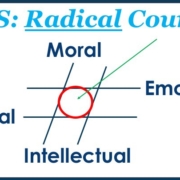What Princess Kate’s doctored photo teaches Leaders about Transparency
Have you ever struggled with how transparent you should be with your employees? Pay levels, promotion decisions, disciplinary action, and profitability rank among the more difficult information-sharing decisions.
You may invite conflict and grievances if you share too much information about everyone’s pay. Share too little, and an employee may leave, suspecting you are screwing them over. Lack of information about profitability can cause employees to wonder about the business’s viability and whether their bonus was appropriate. Too much information about a promotion decision can prompt grievances and concerns about unfairness.
Princess Kate’s doctored photo can help you navigate these information-sharing quandaries and make the best possible decision.
As you’ve probably heard, UK’s Princess Catherine underwent abdominal surgery and expected a lengthy recovery. The Royal Family provided no other information, leaving people to speculate on what problem prompted the surgery and if she’ll ever recover. To assuage the rumor mill, the family sent out a picture allegedly showing Kate and her children happy and healthy. The photo was doctored, heightening the swirl of speculation.
Similarly, the Royals revealed that King Charles has cancer but won’t reveal the type or stage, thus fueling speculation about his reign.
Glass has three levels of see-through: transparent, translucent, and opaque.
Under Queen Elizabeth, the Royal Family was largely opaque: don’t explain; don’t complain. This approach kept most personal matters private and added a level of dignity but created a media frenzy around the late Princess Diana and Harry and Meghan’s Megxit.
The monarchy under King Charles has grown translucent, a tricky balancing act that can quickly go wrong. You come across as too cute by half, fueling drama and speculation.
The royal family might be better off with transparency about Charles’s and Kate’s conditions and opaqueness regarding their daily struggles. There’s little to gain by noting an illness exists but not what it is and much to gain in greater revelation. At the same time, the royals should determine what to share about their personal journeys. Stories about perseverance, courage, and resilience are inspiring.
What does this mean for business leaders?
Set your information-sharing standards around what you want to be transparent about and opaque about. Your processes, for example, should be transparent, especially concerning decisions that affect people’s lives and livelihoods.
Opaqueness is appropriate regarding an individual’s reasonable right to privacy. You can be transparent about the process you used to determine pay without revealing individual pay and benefit packages.
You don’t want to be translucent about the processes or individual matters because people will suspect favoritism, and you’ll find yourself embroiled in drama like the royal family.
How well is this process working for you? Email me to let me know. I love cheering your success and helping you get over obstacles.
Did you know people read this newsletter over 50% of the time? I’m thrilled that you get so much value out of it.
One way you can increase your value to others is by sharing what helps you grow. Whether it’s this blog or another, sharing it and encourage your colleagues to experience what’s valuable to you. Sharing wisdom is like a rising tide lifting all boats.










